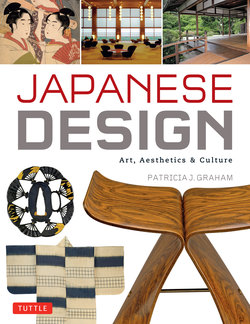Читать книгу Japanese Design - Patricia Graham - Страница 6
ОглавлениеPREFACE
The Enduring Allure of Japanese Design
Everything Japanese is delicate, exquisite, admirable.... Curiosities and dainty objects bewilder you by their very multitude: On either side of you, wherever you turn your eyes, are countless wonderful things as yet incomprehensible. But it is perilous to look at them.... The shopkeeper never asks you to buy; but his wares are enchanted, and if you once begin buying you are lost. Cheapness means only a temptation to commit bankruptcy; for the resources of irresistible artistic cheapness are inexhaustible.
Lafcadio Hearn, Glimpses of Unfamiliar Japan1
The journalist Lafcadio Hearn (1850–1904) wrote these comments in an essay reflecting on his first day in Japan in 1890. They encapsulate the continued attraction of Japanese arts and crafts for Westerners, from his time to the present day.
Hearn was but one of innumerable Westerners of the nineteenth century who fell in love with Japan’s material culture and with the spirit of the country’s people. He and other admirers recognized that Japan’s diverse arts and crafts, buildings, and gardens, from small trinkets to imposing architectural marvels, even those created centuries apart from greatly varying media, possessed special qualities that made them attractive, and as he said, irresistible to the Western public. As we now have come to understand, the appeal of these Japanese arts is based on a very specific set of design sensibilities that have a basis in fine craftsmanship tied to the particularities of the culture that instilled certain values in their makers.
Felice Beato (Italian, 1832–1909), Japanese curio shop, 1868. Hand-colored albumen photograph, 20 x 26 cm. New York Public Library, Photography Collection. Beato produced what are now considered iconic photographs of the people, places, and scenery of Japan during his stay in Yokohama between 1863 and 1884. He was the most commercially successful of the early photographers in Japan, many of whom compiled photos into albums to sell to foreign tourists.
This book is intended to supplement the large existing body of literature on Japanese design and related aesthetic concepts, mainly for audiences unfamiliar with discourses on these subjects within Japan or the scholarly community, framing the topic from a slightly different perspective than that of previous writers. It does not present a historical overview; many writers, both Japanese and foreign, have already done that. Nor does it give emphasis to any particular artistic medium or discuss the development of Japanese art styles within a chronological framework or introduce lineages of artists in any detail. Instead, its chapters explore three interrelated issues: the components that comprise Japan’s design aesthetics, including their formal characteristics; the cultural factors that led to their creation; and the individuals, both foreign and Japanese writers, who have been responsible for creating worldwide awareness of this significant Japanese contribution to world cultural heritage.
The first chapter clarifies the meaning of the most significant and widely used Japanese language aesthetic and design terms today, most of which only became common terminology in Western literature from the 1960s. It also includes a visual survey of the ten most significant formal elements of Japanese design, using contemporary arts to illustrate how centuries-old design principles continue to inform the appearance of many types of contemporary Japanese arts. The second chapter identifies the cultural parameters of Japanese design, revealing how the structure of Japanese society has contributed to the formation of cultural values that impact the appearance of Japan’s design aesthetics and how Japanese society impels its artists, crafts makers, and designers to approach the production of their arts the ways they do. The last chapter highlights the evolution of understanding of Japanese design from the nineteenth century to the present, its ever-growing, widespread, popular appeal, and emphasizes how important Japanese design has been to ongoing theoretical conceptualizations of global design history. The chapter discusses the varied, and sometimes divergent, perspectives of twenty-eight individuals who wrote about the subject—artists and art educators, scientists and physicians, industrial designers and architects, art historians and art critics, and philosophers—both Japanese nationals and foreigners, from the nineteenth century to the first half of the twentieth century. These writers were the first to promote Japanese art, crafts, gardens, and architecture, primarily in the West.
This book culminates many years of thinking about ways to introduce Japanese arts and design to college students, museum visitors, and travelers to Japan unfamiliar with Japanese language and cultural history. My approach has its genesis in my study of the Japanese art collection of the Nelson-Atkins Museum of Art, initially assembled in the early 1930s by Langdon Warner (1881–1955), one of the early writers about Japanese design whom I profile on page 144, and by subsequent Asian curators there—Laurence Sickman (1907–1988) and Marc Wilson. I first studied that collection as a graduate student in the late 1970s, lectured about it to docents and the general public from the mid-1980s through the 1990s, and formally surveyed, and then re-installed it in the museum’s permanent Japanese screen gallery between 1998 and 2001. Sections of Chapters One and Two were also published earlier, in greatly modified form, in an essay for a textbook on Asian art for use in college classes about Asian studies produced by the AsiaNetwork Consortium. I am grateful to the late Joan O’Mara for involving me in that project which encouraged my expansion of that essay into this book.2 My hope is that Japanese Design will entice readers to explore the subject further on their own.
Patricia J. Graham
